2010 Buick LaCrosse CXS with HiPer strut front suspension – Click above for high-res image gallery
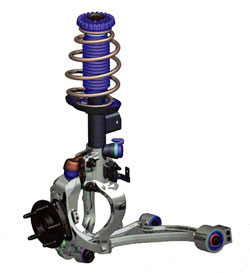 Now that Buick has a refreshed reason to exist in a post-bankruptcy General Motors, the brand isn't sitting still with its products. Take, for example, the redesigned Buick LaCrosse, which only went on sale about nine months ago. GM is already updating the sedan's hardware. It's not that there was anything terribly wrong with the 2009 LaCrosse we first drove last spring, but GM was already working on improvements that are ready to roll out on the 2010 model year.
Now that Buick has a refreshed reason to exist in a post-bankruptcy General Motors, the brand isn't sitting still with its products. Take, for example, the redesigned Buick LaCrosse, which only went on sale about nine months ago. GM is already updating the sedan's hardware. It's not that there was anything terribly wrong with the 2009 LaCrosse we first drove last spring, but GM was already working on improvements that are ready to roll out on the 2010 model year.
The first improvement to hit dealers is a 2.4-liter inline four-cylinder that was announced last year. We've driven that one and will have our first impressions for you next week. However, enthusiast-minded drivers will probably be more interested in Buick's new HiPer strut front suspension. This new adaptation of the long-serving MacPherson strut is designed to almost completely eliminate torque steer while at the same time provide a more compliant ride. Make the jump to learn how it works as we take the 2010 Buick LaCrosse CXS with the new HiPer strut front suspension for spin.
Photos by Sam Abuelsamid / Copyright ©2010 Weblogs, Inc.
The MacPherson strut has been the suspension system of choice on most mainstream cars for decades, but it's always been something of a compromise. The strut configuration dispenses with the upper control arm and steering knuckle used on more traditional setups. Instead, a strut with an integrated damper and knuckle is attached at the top of the wheel well and the outer end of the lower control arm. For most strut arrangements, a coil spring is mounted concentrically around the upper part of the strut, which is also mounted in a bearing or bushing.
The upside of this configuration is that the packaging is very compact and leaves lots of room across the engine compartment for transverse mounted engines. Thus, the vast majority of front-wheel-drive cars use strut suspensions. While the basic layout is compact, the suspension geometry is often less-than-optimal so automakers have tried a variety of modified versions of the strut.
When the wheels are turned, the entire strut rotates and the effective steering axis is formed by a line passing through the top of the strut and the lower ball joint. As a result, when the car is cornering and the wheel is being steered and/or moving up or down, the camber angle (the vertical angle between the tire and the road) changes, which affects the contact patch between the tire and the road.
The effective length of the wheel spindle is defined by the distance from the center line of the wheel/tire to the steering axis formed by the strut. The longer the spindle length the more that the suspension is upset by hitting bumps or slight wheel imbalances. A longer spindle length and bigger camber changes also exacerbate the effects of torque steer.
To help alleviate these issues, GM engineers has created what its calling the HiPer strut (High Performance). The cast aluminum knuckle that forms the lower part of the strut is replaced by a yoke. Attached to this yoke is a separate steering knuckle with its own mounting and rotation points.
What this does is move the steering axis away from the strut. As a result, the steering axis is now more vertical, at least when looked at from straight ahead. The effective spindle length has been reduced from 67 millimeters to just 44 mm. While that 23 mm doesn't sound like much, it can make a huge difference. From the side, the steering axis is still tilted back from the vertical to give some caster angle and thus self-centering when the steering wheel is released.
All of this decouples the steering geometry from the wheel motion geometry. The strut no longer rotates when the wheels are turned so additional bushings can be installed at the lower mount of the strut to give better isolation without impacting the steering feel (Check out the animated video below to see what we mean). The whole setup is designed to be substituted in place of the conventional strut without changing mounting points. The downside is that it does add some mass at the wheels. According to Vehicle Line Engineer Jim Federico, the HiPer strut setup is about four kilograms (nine pounds) heavier at each corner.
%Video-1112%
Our drive loop for the 2010 model with the HiPer strut front suspension consisted of a road with a great combination of curves and undulations. On the first straight section we did a wide open throttle launch and the car took off straight and true without even a wiggle in the steering wheel. Further on down the road through some flat curves the LaCrosse tracked exactly where it was pointed and the steering provided much improved feedback compared to the last example we drove. Federico and his team have done an admirable job of tuning the electric power assisted steering on all versions of the LaCrosse so that the weighting is just right and there are no dead spots.
When we put the gas down at the apex, the LaCrosse just pulled itself out of the corner and shot on to the next one without any drama whatsoever. The steering unwound itself smoothly and kept tracking as the car picked up speed. Where the new suspension really showed off its newfound prowess was when we crested a hill right at the apex of a corner. The suspension went from fully unloaded to fully compressed as the car landed and continued to turn in with little more than a chirp of the tires. The LaCrosse exhibited no undesirable behavior and never jerked around even when the stability control briefly kicked in.
We still probably wouldn't call the LaCrosse a sport sedan, but it exhibits dynamic characteristics we would never have expected from a Buick. The German heritage in its chassis shines through loud and clear. For now, only the front-wheel-drive CXS with the 3.6-liter V6 will get the HiPer strut setup. Since the four-cylinder and all-wheel-drive models don't have the same torque steer issues of the big V6, they will stick with the standard setup. Eventually HiPer struts will appear on other GM models starting with the Regal GS. But the LaCrosse gets it first and GM's assembly plant in Fairfax, Kansas will start building HiPer-equipped LaCrosses in May.
Photos by Sam Abuelsamid / Copyright ©2010 Weblogs, Inc.
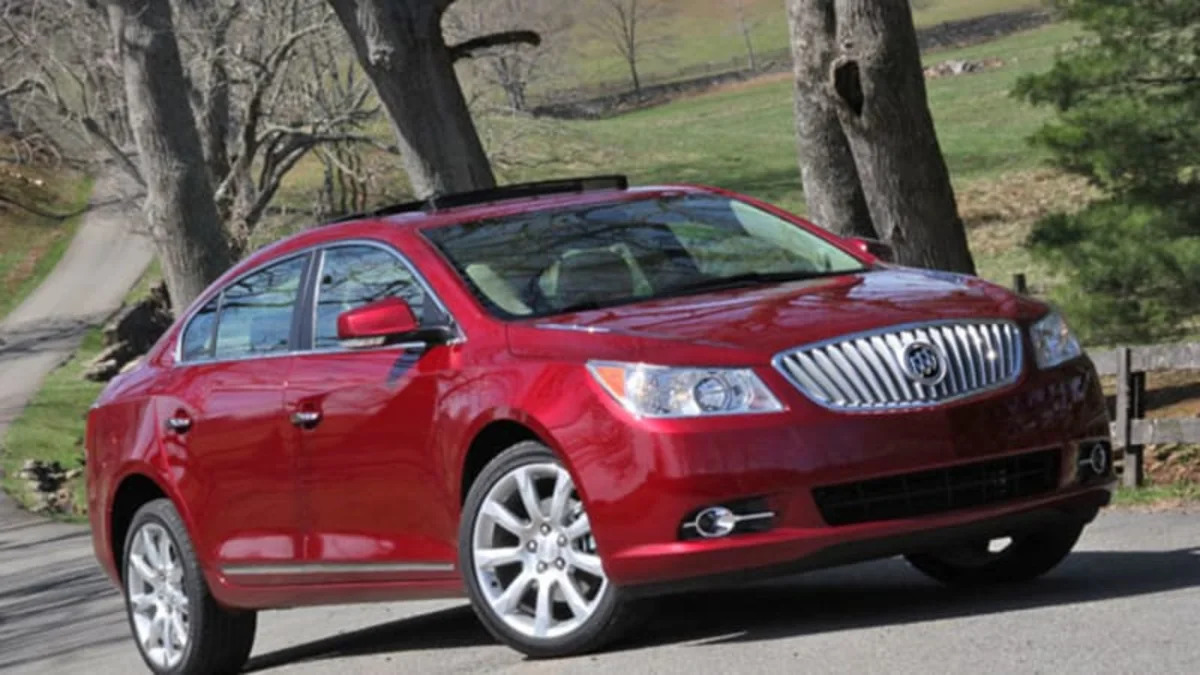
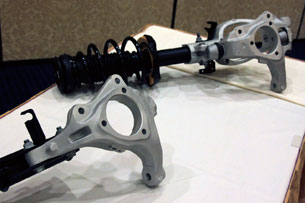
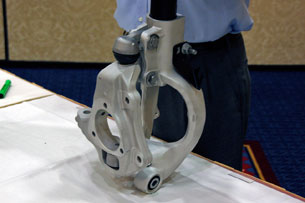
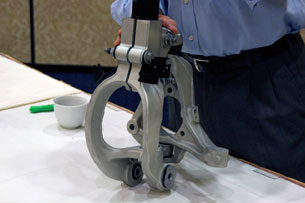
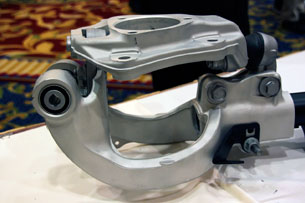

Sign in to post
Please sign in to leave a comment.
Continue